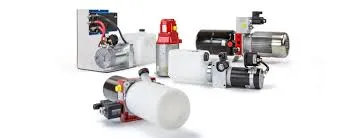Jul . 31, 2024 22:18 Back to list
Hydraulic Cylinder Manufacturers Specializing in High-Quality Wood Splitter Equipment Production
The Importance of Hydraulic Cylinders in Wood Splitter Manufacturing
In the world of woodworking and log processing, efficiency is paramount. As tasks require increasing precision and strength, wood splitters have emerged as essential machinery for both commercial sawmills and individual woodworkers alike. At the center of this powerhouse equipment are hydraulic cylinders, integral to optimizing the performance of wood splitters. This article explores the crucial role of hydraulic cylinders in the wood splitter manufacturing process and how factories specialize in their production.
What is a Hydraulic Cylinder?
A hydraulic cylinder is a mechanical actuator that converts hydraulic energy into linear motion. These cylinders are filled with pressurized hydraulic fluid, which facilitates powerful movement through pistons. In wood splitters, hydraulic cylinders enable high forces to be applied on the logs, splitting them efficiently and reducing manual labor significantly.
The Mechanism at Work
When the hydraulic system is activated, pressurized fluid is delivered to the hydraulic cylinder, forcing the piston to move forward. This linear motion drives the splitting wedge into the log, producing clean and precise splits. The use of hydraulic cylinders allows for significant tonnage outputs—often exceeding 30 tons or more—making the process not only efficient but also effective for handling large and tough logs.
Factory Production of Hydraulic Cylinders
Wood splitter hydraulic cylinder factories are specialized manufacturing facilities that design and produce these essential components. The manufacturing process is meticulous, requiring precision engineering and high-quality materials to ensure durability and reliability. Key steps in the production include
wood splitter hydraulic cylinder factory

1. Material Selection High-strength steel is commonly used for hydraulic cylinders due to its ability to withstand high pressure and demands placed on the machinery. Factories often conduct thorough material testing to guarantee longevity and perform under extreme conditions.
2. Machining Precision machining is performed to fabricate cylinder components. This includes turning, milling, and honing processes that create the inner surfaces of the cylinder for optimal sealing and fluid flow. Highly skilled machinists use state-of-the-art CNC equipment for accuracy.
3. Assembly After machining, hydraulic cylinders are assembled. This stage involves fitting the piston into the cylinder, seals to prevent leaks, and fittings for hydraulic fluid connections. Ensuring that the assembly is airtight is crucial for the hydraulic pressure to function effectively.
4. Testing Rigorous testing is conducted to ensure that the finished cylinders can handle the designated pressure ratings. Factories simulate conditions to ensure long-term reliability, which is vital for end-users who depend on consistent performance.
Innovations and Advancements
The wood splitter hydraulic cylinder manufacturing industry has also embraced technological advancements. Innovations in hydraulic fluid technology, cylinder design, and materials science have led to increased efficiency and performance. Smart sensors can now be integrated into hydraulic cylinders, enabling real-time monitoring of pressure and performance, thus enhancing the longevity and effectiveness of the wood splitters.
Conclusion
In conclusion, hydraulic cylinders are the backbone of wood splitters, providing the power needed to split logs with ease and precision. Factories dedicated to producing these sophisticated components play a critical role in the wood processing industry. As the demand for efficient wood processing solutions continues to grow, the need for high-quality hydraulic cylinders will remain paramount. Investing in top-notch manufacturing and fostering innovation will ensure that wood splitters continue to evolve, meeting the needs of an ever-changing market. Whether for commercial or personal use, understanding the importance of hydraulic cylinders is essential for anyone involved in the woodworking sector.
-
Fork Lift Power Units - Hebei Shenghan | Efficiency, Reliability
NewsJul.13,2025
-
1.5-Ton Turbocharged Cylinder-Hebei Shenghan|Hydraulic Solution,Energy Efficiency
NewsJul.13,2025
-
Auto Hoist Power Units-Hebei Shenghan|Efficiency&Industrial Lifting
NewsJul.13,2025
-
Double Acting Power Units-Hebei Shenghan|Hydraulic Solutions,Industrial Efficiency
NewsJul.13,2025
-
1.5 Ton Lifting Cylinder 70/82-40-290-535 - High-Performance Hydraulic Solution | Hebei Shenghan
NewsJul.13,2025
-
Fork Lift Power Units - Hebei Shenghan | Efficiency&Reliability
NewsJul.13,2025
